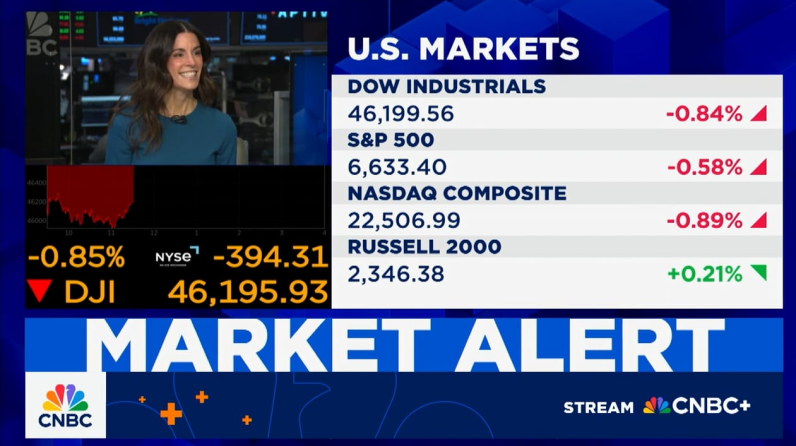

We would not recommend repositioning based on economic growth concerns as a byproduct of the shutdown and believe that expectations for continued fiscal instability over the coming weeks are not likely to derail the existing momentum in risk assets.
The U.S. government shut down overnight, as ongoing disagreements in Congress, particularly over the extension of Affordable Care Act insurance subsidies and efforts to reverse cuts to Medicaid funding, created a divide too wide for both parties to cross. While Republicans had proposed a seven-week continuing resolution to maintain funding and sought to negotiate ACA subsidies separately, the Democrats were reticent to move forward without addressing the nearly $1 trillion in Medicaid funding cuts enacted earlier this year.
Breaking down the near-term impact, approximately 40% of federal employees have been furloughed while 60% continue essential work without pay, typically receiving retroactive compensation later. Essential functions like those performed by the FAA and TSA continue; Social Security and Medicare benefits are maintained; and veterans will continue to receive medical care and pensions. Civil services such as law enforcement, food inspection, presidential duties, and Congressional pay continue uninterrupted, and organizations like the Federal Reserve, CFPB, Amtrak, USPS, Fannie Mae, and Freddie Mac are not affected. The SEC’s EDGAR portal remains operational, but IPOs and filing reviews are likely to be delayed due to significant furloughs. National parks, Smithsonian museums, and monuments are now closed, the military and National Guard operations continue unpaid while most civilian defense staff are furloughed.
To put the event in context, this marks the eleventh shutdown since 1980; the duration of these events ranged from one day to the record-setting 35-day partial shutdown during President Donald Trump’s first term. Important to note that while disruptive, the economic effects of shutdowns tend to be temporary. For example, while the Congressional Budget Office estimated the lengthy 2018-2019 partial shutdown reduced real GDP in the first quarter of 2019 by $8 billion, or 0.2 percent, most of that output was later recovered in subsequent catchup growth. The permanent reduction in GDP was minimal at $3 billion or 0.02 percent.
Admittedly, the timing of this shutdown may prove more difficult for investors, given the threat to the availability of employment and inflation data. The Bureau of Labor Statistics is set to release non-farm payrolls data for the month of September on Friday as well as CPI data on October 15th. A delay in the release of already collected non-farm payrolls data coupled with inadequate staffing to collect CPI data could weigh on both the equity and bond markets, particularly given expectations that the Fed will continue to ease into the end of the year. Without this important government provided data, the Fed and investors will be forced to look more closely at secondary data sources; there may also be additional noise in the data which will need to be appropriately evaluated.
Even with this complication, and an admission that each of these shutdowns has been unique based on the economic environment in which they occurred, the data shows that brief shutdowns have not historically affected corporate earnings or long-term market trends. Federal agencies have developed procedures to maintain essential functions and investors have learned to look beyond headline risk. As such, it is not a surprise that coming into today’s shutdown, U.S. equities have continued to perform well, with the Dow cresting a record high to close the quarter and the S&P 500 adding to strong year-to-date gains.
While equity futures are down modestly this morning on the shutdown news, we would be hesitant to trim equity exposure with the Q3 earnings season set to kick off in earnest in two weeks – especially with estimates considered conservative. In addition, Treasury yields are not likely to move meaningfully, unless the threat of a more protracted shutdown rises, increasing volatility in the equity markets and dampening growth estimates for Q4 2025. Overall, we would not recommend repositioning based on economic growth concerns as a byproduct of the shutdown, and we believe that expectations for continued fiscal instability over the coming weeks are not likely to derail the existing momentum in risk assets.


VIDEO
The Kantor Group | Charles Kantor’s Year-End Reflections and Key Questions as We Head Into 2026

INSIGHTS
CIO Notebook: Dual Release of Delayed Non-Farm Payrolls Likely Supports Another Cut

INSIGHTS
Using Tax-Free Gifts for Wealth Transfer

INSIGHTS
CIO Notebook: Powell Plays the Middle as Fed Cuts Rates

MARKET COMMENTARY
Giving Thanks for Market Strength

INSIGHTS
CIO Notebook: September U.S. Non-Farm Payrolls Further Complicate the Narrative

VIDEO
Holly Newman Kroft Featured on CNBC’s Money Movers November 18
VIDEO
Plan for Peace of Mind with Our Estate Planning Organizer
MARKET COMMENTARY
Some Tricks, More Treats
INSIGHTS
CIO Notebook: Markets Rattled as Fed Leans Hawkish
REPLAY
Private Wealth Investment Outlook 4Q25
INSIGHTS
CIO Notebook: September Core CPI Comes in Late but Light
INSIGHTS
Charitable Fundraising: Moving Beyond Cash
IMPORTANT INFORMATION:
This material is provided for informational purposes only and nothing herein constitutes investment, legal, accounting or tax advice, or a recommendation to buy, sell or hold a security. This material is general in nature and is not directed to any category of investors and should not be regarded as individualized, a recommendation, investment advice or a suggestion to engage in or refrain from any investment-related course of action. Any views or opinions expressed may not reflect those of the firm as a whole. Neuberger Berman products and services may not be available in all jurisdictions or to all client types. Diversification does not guarantee profit or protect against loss in declining markets. Investing entails risks, including possible loss of principal. Investments in private equity are speculative and involve a higher degree of risk than more traditional investments. Investments in private equity are intended for sophisticated investors only. Unless otherwise indicated, returns shown reflect reinvestment of dividends and distributions. Indexes are unmanaged and are not available for direct investment. Investing entails risks, including possible loss of principal. Past performance is no guarantee of future results.
Portfolio positioning views expressed herein are those of Neuberger Berman’s Private Wealth Investment Group, which may include those of the Neuberger Berman’s Asset Allocation Committee. Asset allocation and positioning views are based on a hypothetical reference portfolio. The Private Wealth Investment Group analyzes market and economic indicators to develop asset allocation strategies. The Private Wealth Investment Group works in partnership with the Office of the CIO. The Private Wealth Investment Group also consults regularly with portfolio managers and investment officers across the firm. The Asset Allocation Committee is comprised of professionals across multiple disciplines, including equity and fixed income strategists and portfolio managers. The Asset Allocation Committee reviews and sets long-term asset allocation models, establishes preferred near-term tactical asset class allocations and, upon request, reviews asset allocations for large, diversified mandates. Asset Allocation Committee members are polled on asset classes and the positional views are representative of an Asset Allocation Committee consensus. The views of the Asset Allocation Committee and the Private Wealth Investment Group may not reflect the views of the firm as a whole and Neuberger Berman advisers and portfolio managers may take contrary positions to the views of the Asset Allocation Committee or the Private Wealth Investment Group. The Asset Allocation Committee and the Private Wealth Investment Group views do not constitute a prediction or projection of future events or future market behavior. Defensive positioning generally means an underweight bias on allocations to risk assets such as equities and alternatives. Positioning views may change over time without notice and actual client positioning may vary significantly. Discussion of yield characteristics or total returns of different asset classes are for illustrative purposes only. Such asset classes, such as equities and fixed income, may have significantly different overall risk-return characteristics which should be consider before investing.
The information in this material may contain projections, market outlooks or other forward-looking statements regarding future events, including economic, asset class and market outlooks or expectations, and is only current as of the date indicated. There is no assurance that such events, outlook and expectations will be achieved, and actual results may be significantly different than that shown here. The duration and characteristics of past market/economic cycles and market behavior, including any bull/bear markets, is no indication of the duration and characteristics of any current or future be market/economic cycles or behavior. Information on historical observations about asset or sub-asset classes is not intended to represent or predict future events. Historical trends do not imply, forecast or guarantee future results. Information is based on current views and market conditions, which will fluctuate and may be superseded by subsequent market events or for other reasons.
Discussions of any specific sectors and companies are for informational purposes only. This material is not intended as a formal research report and should not be relied upon as a basis for making an investment decision. The firm, its employees and advisory accounts may hold positions of any companies discussed. Nothing herein constitutes a recommendation to buy, sell or hold a security. It should not be assumed that any investments in securities, companies, sectors or markets identified and described were or will be profitable. Investment decisions and the appropriateness of this content should be made based on an investor's individual objectives and circumstances and in consultation with his or her advisors.
Neuberger Berman Investment Advisers LLC is a registered investment adviser.
The “Neuberger Berman” name and logo are registered service marks of Neuberger Berman Group LLC.